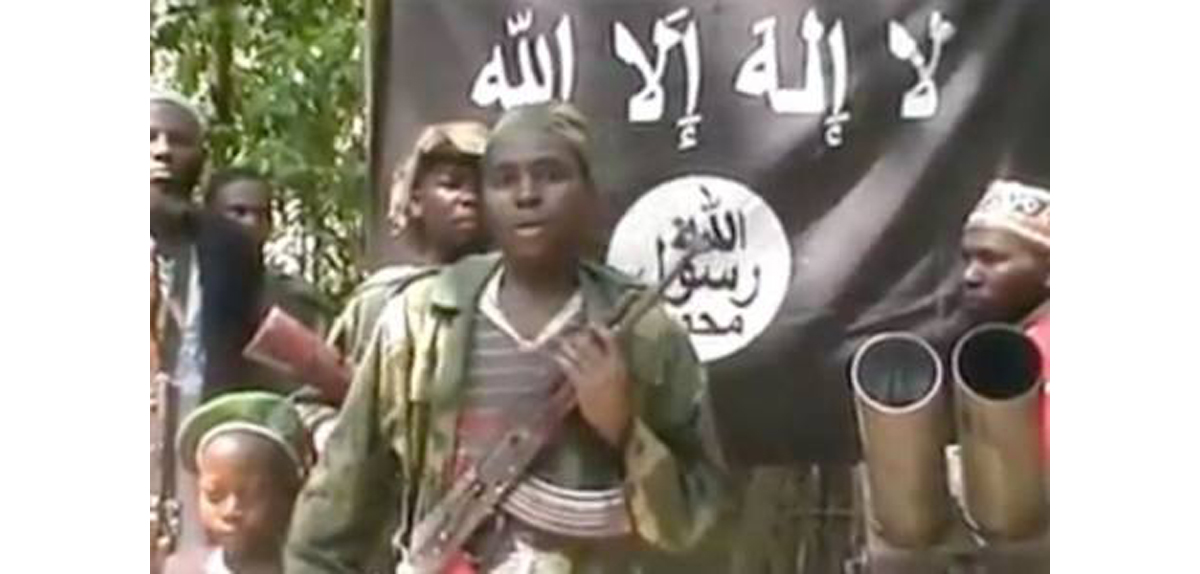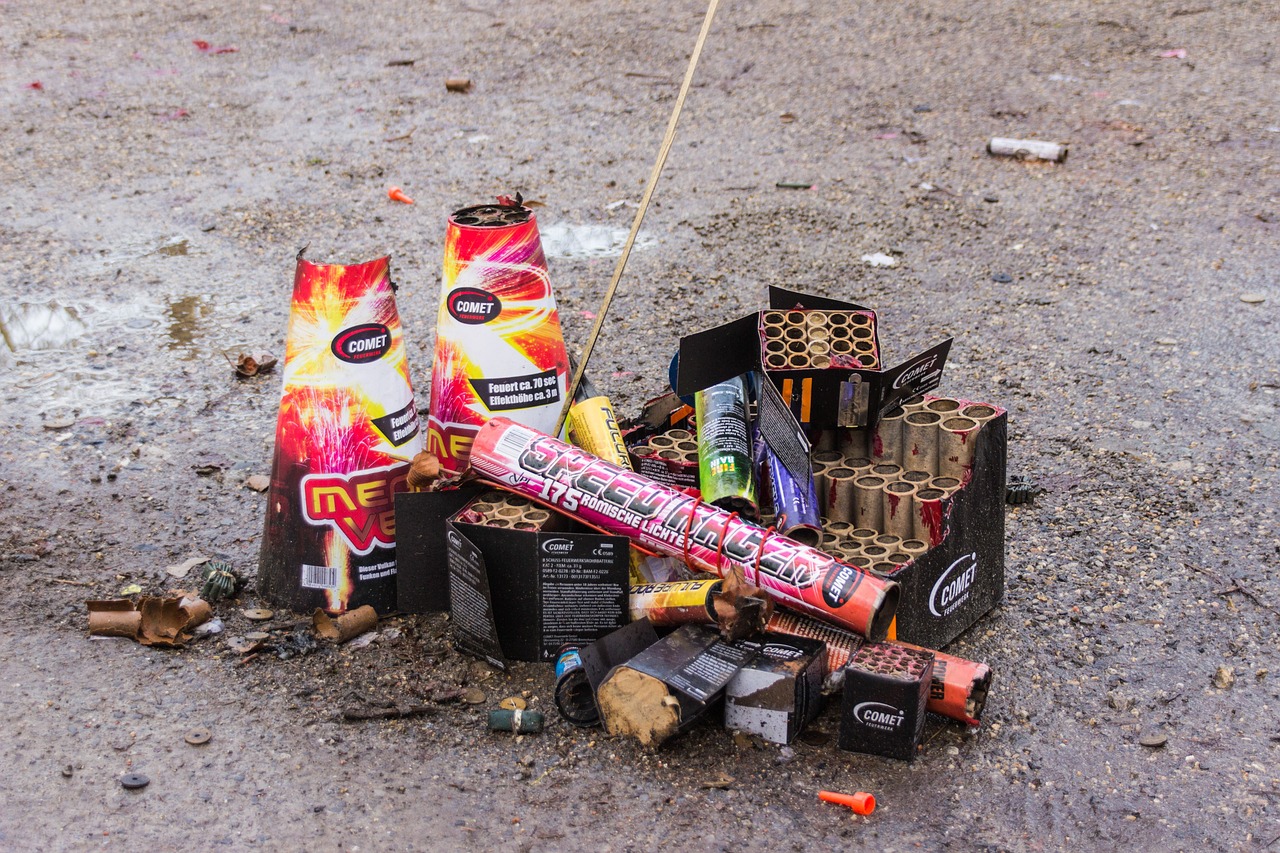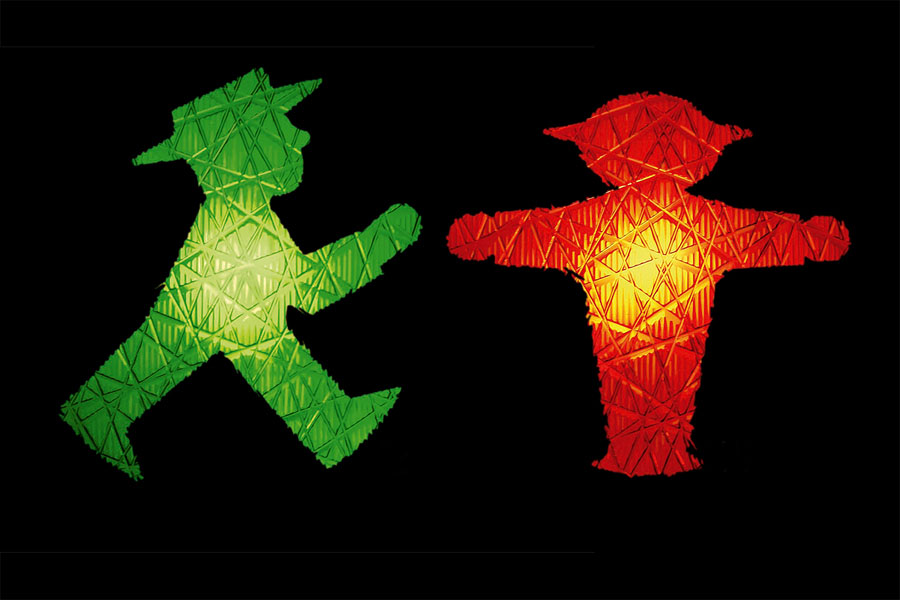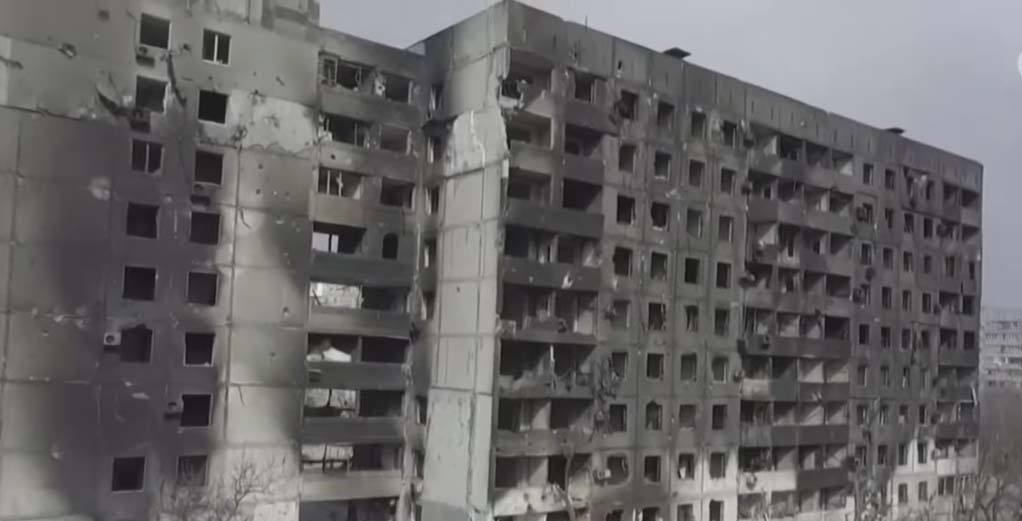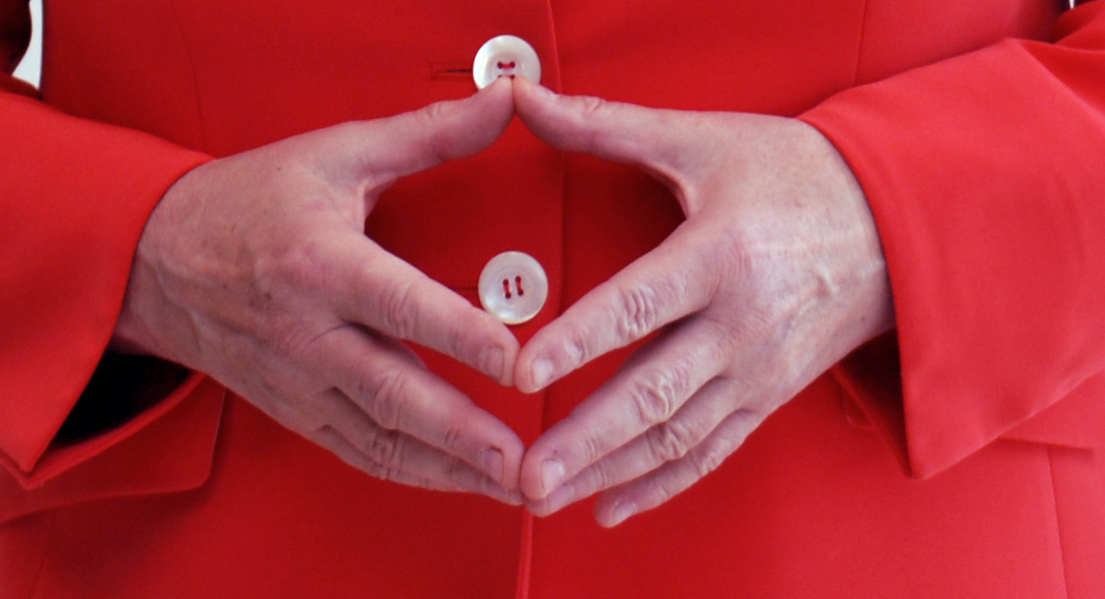The US State Department has referred to the threat of Islamist terrorism in eastern Congo using a meaningful acronym: ISIS-DRC. In its note of March 10, 2021, the State Department designated a man by name: Seka Musa Baluku, as the head of the Islamic State of Iraq and Syria in the Democratic Republic of Congo. We conducted research to learn more about the evolution of the security crisis in eastern Congo, and to identify the politico-military dynamics that may have led to the focus on this man. Who is Seka Baluku? Is he really the all-powerful jihadist military leader who sows desolation in the Congo in the name of Islam? How can a man, reclusive within a radius of 50 km of a very small territory, Beni, under the control of the army and the UN peacekeepers, have managed to gain the status of “global terrorist” ( ODD), under the watch of the world’s largest peacekeeping mission, MONUSCO, and a government army of around 176,000 soldiers, the FARDC? What if the target of the Americans, in reality, was not Seka Baluku, but a simple alibi? …
We will develop this analysis from the person of Seka Baluku, between knowingly amplified realities and revealing myths of shameful geopolitical issues. We will also try to explore these issues beyond the Beni crisis and examine possible links between the reaction of the United States and the suspicious activities of those close to former President Joseph Kabila.
1. Seka Baluku or the enemy to be protected
The enemy of the state?
Seka Musa Baluku is a well-known man in Beni territory where he still lives without being really worried, despite the impressive militarization of this small territory where thousands of FARDC soldiers and peacekeepers are concentrated, officially fighting against his movement, the “ADF”. Better still, unlike the United States, which officially considers him to be an “enemy”, an Islamist terrorist, the Congolese authorities have never issued an arrest warrant or a search notice against Seka Baluku, one of the puzzling realities which proves, in many ways, that Seka Baluku is not even officially considered an “enemy” by the Congolese state and MONUSCO.[1]
He is a Ugandan citizen born around 1977, according to the UN Sanctions Committee. [2] He is a former cadre of the original ADF, the movement of Jamil Mukulu, a former Ugandan rebellion whose members, convinced that they would never take power in Uganda, had resigned themselves to establishing themselves in Beni territory, North Kivu province, in 1995. Seka Baluku must have been just 18 years old by then. He would remain in the shadow of his leader, Jamil Mukulu, at the heart of this organization operating in Beni as a local mafia, which thrived on various trafficking activities, sometimes carried out attacks against the army for supplies, and committed kidnappings and targeted assassinations against its dishonest business partners. The fate of Seka Baluku wiould radically change following geopolitical events totally unrelated to his organization, when the M23, a Tutsi militia, seized the city of Goma on November 20, 2012. It was the butterfly effect[3] whose cataclysmic consequences would occur 300 km away, in the countryside of Beni, but no one knew yet.
The fall of Goma caused international consternation. Diplomatic and NGO pressures were such that US President Barack Obama and British Prime Minister David Cameron, even though Paul Kagame’s Rwanda sponsors, decided to support the adoption, on March 28, 2013, of a historic resolution of the UN proposed by France creating an offensive military force within MONUSCO, the “intervention brigade”. Its mandate was to “neutralize armed groups” and specifically mentioned in § 8 of the historic resolution, the M23, the FDLR and the ADF.[4] The brigade of 3,069 soldiers from South Africa, Tanzania and Malawi, had three infantry battalions, an artillery company, a special force, a reconnaissance company and significant support assets. The days of the original ADF, the movement of Jamil Mukulu were numbered.
On October 13, 2013, Jamil Mukulu was targeted by UN sanctions[5] and his situation became precarious within his organization, which would benefit his number 2, Seka Baluku. In October 2013, war was raging in the north of Goma where Colonel Mamadou Ndala’s troops, supported by the MONUSCO intervention brigade, were gaining ground on the M23. It was then that a man, Joseph Kabila, intervened in the ADF affair, in the territory of Beni. It was the beginning of the transformation of the ADF, but the members of the organization did not yet know it.

According to a former assistant of the DDRRR process[6] within MONUSCO, the envoys of President Kabila contacted Seka Baluku. The aim was to weaken the ADF by dividing them into factions, one of which was on Kabila’s side in order to put Jamil Mukulu in the minority. Classic strategy in times of war: divide the enemy to weaken him.
The guarantees offered to Seka Baluku by Kabila in 2013 are not clearly known, but could partly explain the current catastrophic development of the Beni crisis. We were told about the supply of arms, money, recruits and protection by the FARDC operating officers in the Beni region. The ADF organization would then be divided. Fights would even break out internally. When Colonel Mamadou Ndala’s troops arrived in Beni in December 2013, Jamil Mukulu was already living insecure in his own maquis. Operation Sukola 1, which targeted the ADF of Jamil Mukulu, was launched in January 2014 by General Jean-Lucien Bahuma, with the troops of Colonel Mamadou Ndala, who had just been assassinated on January 2, 2014, in circumstances that have never been clarified.[7]
To return to the rivalries created by Joseph Kabila between Jamil Mukulu and Seka Baluku, bear in mind that Kabila’s motivations were not only following standard military strategy (divide the enemy to weaken him). A personal conflict put Kabila in direct conflict with Mukulu to the point that the two men hated each other to death. According to an anecdote, Kabila had, beyond this armed conflict, personal accounts to settle with Jamil Mukulu who resented that he had been cheated him in a financial affair during his stay in Kinshasa, during the Second Congo War (1998 -2003). The cadres of the ADF, Ugandan rebels, had obtained the protection of President Laurent-Désiré Kabila, at war against Uganda, following the classic logic that the enemy of my enemy is my friend. Jamil Mukulu was staying in Kinshasa in one of the residences of Joseph Kabila who was then chief of staff of the land forces. It was there that, by chance of history, the two men became known to each other, had become familiar with each other, appreciated and then hated each other over a matter of money which is said to have harmed the interests of Jamil Mukulu. Hence his departure from Kinshasa for Kenya, then his return to the Beni maquis at the end of the Second Congo War and the reunification of the country in 2003. Hence, also, an obsessive fixation of Joseph Kabila, who became President of the Republic, and his determination to settle scores with his old friend and personal enemy, Jamil Mukulu.
2. Joseph Kabila and the renewal of the “ADF”
April 2014: General Jean-Lucien Bahuma had just defeated the movement of Jamil Mukulu and taken all its strongholds, including the famous camp of “Madina” which served as his command base. It was at the end of four months of intense fighting that had claimed the lives of several hundred soldiers on both sides, but the troops of the General triumphed. Bahuma brought journalists and even official Ugandan government delegations to the various sites where the original ADF were located. A great moment of relief for the people of Beni who were going, for the first time since 1995, to live in freedom, rid of this Ugandan mafia. With a workforce of 1,500 combatants, at the end of 2013, the ADF had an insignificant number of survivors on the run.
According to the UN Group of Experts, there were only “150 to 200 members left: around 30 soldiers, 30 to 40 commanders (who were not taking part in the fighting), plus women and children. The soldiers would have neither weapons nor ammunition and would be deprived of sources of supply and equipment.[8][8] At the end of this operation, at the end of April 2014, the UN investigators noted that the ADF no longer existed as an organized military force. Seka Baluku and the survivors of the original ADF were then on the run and no longer had the military capabilities to carry out any operation. Hence the question: who provided Seka Baluku with the military resources that enabled him to find himself, on March 10, 2021, in the sights of the United States?
Seka Baluku resurrected by General Mundos
For six months, the inhabitants of Beni lived happy and free. Traffic had resumed throughout the territory and people could walk day and night in peace. It was then that an unexpected event occurred. On August 31, 2014, General Jean-Lucien Bahuma, victorious in the war against the ADF and peacemaker of the territory of Beni, suddenly died of possible poisoning. His death caused deep consternation and the virtual certainty that the joy of the people of Beni had just ended. All the enemies of the General would now be unleashed on Beni. We will return to this.
A few months before his death, the population of Beni, and even the military, observed a strange attitude from the regime of Joseph Kabila and its local and provincial officials. There were waves of Rwandan migrants pouring in who said they came to cultivate their fields in Oicha, Eringeti, Boga, Chabi,… “Their fields? How did they acquire these fields? The areas they designated would gradually become hotbeds of unbearable insecurity. The natives of Beni who tried to oppose these waves of migration were severely repressed by the authorities. The former governor of North Kivu and ultra-kabilist follower Julien Paluku would even come to scold the local populations by treating them as “medieval and tribalist people”.[9] It seems that in these months of 2014, Kabila and his followers, feeling the end of his presidency in two years, in 2016, were working hard to carry out a regional agenda for the benefit of Rwanda, consisting, among other things, in establishing Rwandan populations on Congolese soil, regardless of the consequences on the natives. This agenda can be read, among others, in the agreements of March 23, 2009 and the one signed in Nairobi[10] by his regime and the Tutsi militias of the CNDP / M23.[11]
To return to the military plan, just two days after the announcement of his death, Bahuma was replaced as the head of Operation Sukola 1, in Beni, by General Charles Akili Muhindo, also known as Mundo, a personal friend of Joseph Kabila[12] and his henchman in the territory of Beni. Mundos had already made contact with Seka Baluku’s men, but not only with them. He also made contact with local armed groups that General Bahuma had already defeated and silenced. We do not know exactly what were the intentions of Joseph Kabila in these moments of Autumn 2014. To keep his promises to Seka Baluku or to create an “artificial Islamist terrorism” to use it as an argument of security necessity in his relations with the international partners of the DRC?[13] We may never know.
What is certain is that, under the command of General Mundos in Beni, Seka Baluku, who had almost nothing left, apart from a handful of defeated fighters, without weapons, without supplies, or even enough to eat, received everything. Weapons, ammunition, intelligence and especially death squads recruited from the ranks of the ex-M23 and its genealogical relays of the CNDP, RCD-Goma, RDF, the Rwandan army, and the FDLR-RUD.[14] Suddenly, sociologically, the physiognomy of the original ADF changed. In its first report after the start of the massacre campaign, the UN Panel of Experts noted that, for the first time, attackers spoke in Lingala and Kinyarwanda. [15] The original ADF spoke neither Lingala nor Kinyarwanda. The era of new “ADF”, speaking in Kinyarwanda and Lingala, had just begun.
The fabrication of artificial Islamist terrorism
It is not only the sociological morphology of the ADF that was changing. The modus operandi also changed. While the original ADF operated in the classic mode of the mafias, committing targeted assassinations, some kidnappings while preserving their mafia businesses, the Beni crisis began to deliver images of Rwandan-style massacres in the media and social networks. UN investigators were baffled. Not only did the victims say that they did not understand the motivations of the attackers, but above all the latter engaged in atrocities of unimaginable cruelty. Pregnant women were disembowelled and faetuses cut up. Babies had their throats cut. Sick and old people were killed with machetes, pestles, axes, even in hospitals, without any apparent motive. These new type “ADFs” had nothing to do with Jamil Mukulu’s ADF that the population of Beni had known for two decades. Abroad where we discover these appalling images, worthy of the Rwandan genocide, everyone asked the question “Who are these killers?”.[16] The answer would not come because it was the entire state system of Joseph Kabila which was at work in this macabre enterprise of massive killings in order to accredit the thesis of Islamist terrorism in the Congo.
Indeed, now in 2014 and on the other side of the world, an organization called ISIS / DAESH was ravaging Syria and Iraq by returning images of unbearable cruelty to the media. On June 29, 2014, the Islamist organization proclaimed the establishment of a caliphate, a proto-state on the territories straddling the borders of Syria and Iraq, where it established a totalitarian system. The adventure surely inspired the thinking heads of Joseph Kabila’s regime. Beni then experienced a massive influx of populations from Rwanda as part of the secret and official agreements between the powers of Joseph Kabila and his mentor Paul Kagame. The hostility of the indigenous Congolese was always an obstacle, but a campaign of massacres under the guise of Islamist terrorism, at these times when “Islamic State” looped through all the media, would break down any form of local resistance. All army units were instructed to say they were fighting Islamist terrorists in Beni. A war against Islamism in a territory whose inhabitants are almost 100% Christian?[17] Grotesque!
From the first massacres, survivors and witnesses disputed this official version. “Haiko ba NALU* njo biko na tuua. Ni ba soda njo biko na tuua”. [In Swahili, it is not the ADF / NALU* who are killing us. It is the soldiers** who are killing us].[18] The thesis of Islamist terrorism did not convince anyone. But the power of Kinshasa would not relax its efforts, especially as the Islamic State continued to flood the media with horrific images. The massacres in Beni had to continue, and those in power had to continue to speak of “ADF Islamist terrorism” [19]. According to sources within the powers in Kinshasa and Kigali a communication strategy had been put in place to accredit the thesis of Islamist terrorism in Beni, when doubts about the identity of the “ADF” of the killers began to express itself more and more.
Produce a psychological impact by the hype of the official version
Beginning 2015, it was decided to create a communication unit responsible for flooding the media with information including the strict language of words such as “Islamic terrorists”, “Islamist Ugandan ADF rebels”, “terrorist jihadists”… so that by dint of bludgeoning, the thesis of international Islamist terrorism was grafted into the collective psychology, while the trail, however visible, of the Rwandan death squads, was never addressed in the conventional media on the subject of the Beni massacres.
NGOs members, journalists and political actors linked to power were recruited for the mission. They were discretely paid for services rendered by an adviser to Joseph Kabila who carried out missions in Beni and ensured links between General Mundos, commander of Operation Sukola 1, and the members of this communication network. Thus, certain massacres labelled “ADF jihadist terrorists” were sometimes reported in the media, only a few quarters of an hour after the killings, with details and clarifications which, objectively, would have required weeks, even months, before professional investigators were able to establish the facts.
In any case, and despite the media hype, great doubt would permanently settle in their minds. The media, even international ones, relayed the time-honoured phrase “Ugandan Islamist rebels ADF”, “in connection with the Islamic State”, but the inhabitants of Beni were not fooled. For its part, the UN Panel of Experts would react historically from the start, and its position has remained constant.
In its report of May 23, 2016, it affirmed: “Many individuals, including within the Government of the Democratic Republic of Congo, still maintain that the ADF have links with foreign terrorist groups and that they are massacring civilians as part of their new strategy. There is no evidence for this allegation. Although armed groups and local militias participated in the killings, it is now evident that FARDC officers were involved in recruitment and supply operations for the armed groups responsible for these killings”.[19] Four years later, the position of the UN Panel of Experts had not changed: “there is “no link or direct support between the Islamic State and the ADF“, according to its report of December 23, 2020.[20]
However, this observation must be made while keeping an eye on the dynamics of the evolving crisis.
3. The ADF phenomenon, its dynamics and the reaction of the United States
When we analyse the Beni crisis closely, we discover several dynamics behind the ADF phenomenon. We have retained two, mainly[21]: a dual dynamic internal to the FARDC, associating the actions of regular soldiers and the squadrons of Seka Baluku, and a peripheral dynamic around foreigners channelled into the bush of Beni by the authorities, and who were able to put the United States on alert, over the activities of the powerful General Delphin Kahimbi, head of military intelligence, and close to the Sudanese regime, which was in the sights of American intelligence. We will come back to that.
The double internal dynamic of the FARDC and the new “ADF”
It is evident in the investigation reports, particularly from the UN. Basically, it is an army that massacres its own population and then pretends that these attacks are the work of a nebulous enemy. In the report of the UN Group of Experts of May 23, 2016, we can clearly read that army officers recruited combattants on behalf of the “ADF”, supported armed groups and released people who participated in the massacres. These practices have been confirmed in other investigation reports. The power of Kinshasa had thus created parallel networks within the FARDC. To amplify the climate of terror, FARDC soldiers, against cash transferred from Kinshasa and distributed within the units, were to commit killings of civilians. The killings were to be committed by small units, of which several sources within the FARDC themselves reported their unexplained disappearances at night, then their return to the battalions and regiments after the murders of civilians.
While the Rwandan militias of Seka Baluku carried out killings in the countryside, but always near army positions, FARDC soldiers carried out killings in the cities, also near their positions. In order to avoid being caught by the population if they strayed too far from their army positions…
Loyalist Congolese and patriotic soldiers, shocked by what was happening, would try to react to these killings and to go and rescue the population who called for help. They would be severely punished by their commanders, as reflected in the report of a group of elected parliamentarians from North Kivu. We can read that a Major “contacted by a child survivor while the killings were in progress and the cries of the victims reached the position he controlled, threatened to shoot any element of his unit that dared to intervene and even ripped off the shippers from some of the elements concerned to intervene ”. Another officer completely shut down the two hotlines set up by MONUSCO, thus depriving the population, which was being massacred, of the possibility of calling for help.[22]
This internal dynamic, that is to say: an army which massacres its own population and maintains chaos, is, to this day, the main factor of the ADF phenomenon, even if it is difficult to explain, especially to foreigners.[23]

The new ADF
On the ground, it evolved in a complementary way with that of the squadrons of the death of Seka Baluku, since the latter’s pacts with the FARDC officers. It is this reconstituted group of Seka Baluku that is usually [but improperly] called “the ADF”, to this day. In reality, these are fake ADFs created from scratch from 2014 after the victory of General Bahuma’s troops over Jamil Mukulu’s original ADF. Seka Baluku has since been used as a sort of cover and “ADF” label to hide and shoulder responsibility for Rwanda’s war of massacres and land conquest against the indigenous populations of Beni.
Seka Baluku received, in exchange for hosting these death squads, the protection of FARDC officers. According to our sources, the power of Kinshasa also prohibited him from expressing himself in the media about the attacks. He must neither claim nor deny the attacks. The only ones who must speak out about the massacres are the members of the communication cell set up by the government with the mission of hammering into the media the thesis of international Islamist terrorism in Beni.
The dynamics of foreign Islamists and the reaction of the United States
It is since the beginning of the massacres that the power of Kinshasa (Kabila at the time) tried to make believe in international opinion that there is an international Islamist terrorism in Beni. This thesis has always been contested on the spot, which embarrassed the authorities whenever they attributed the attacks to the Islamists, and even to the Islamic State. A nucleus of foreign Muslim fighters was therefore formed by recruitments in countries confronted with Islamist terrorism and transported to Beni territory. It is this nucleus that makes claims for attacks on the sites of foreign Islamist movements, including ISIS. But it is essentially a diversionary manoeuver to get people to focus their attention on ISIS and to look away from the previous two dynamics: the internal dynamics of the FARDC and the dynamics of the Seka Baluku group.
Our sources tell us that there have been, since 2019, initiatives aimed at firmly establishing a nucleus of foreign Islamists in the territory of Beni. These Muslim fighters are working to get ISIS’s assault on Beni, but ISIS has no proven operational military presence in Beni. This handful of Muslim fighters sometimes carry out smaller attacks with the sole aim of promoting themselves and creating a diversion for the main planners of the massacres operating in the internal dynamics of the FARDC. These foreign Muslims do not have the capacity to operate independently. They need to be protected by the parallel networks within the FARDC and in the power of Kinshasa, which are keen to shed their responsibility for the massacres. Over time, however, the situation has become difficult to sustain for the government, faced with increasingly insistent demands for an international investigation into the Beni crisis. In 2020, an investigator from the International Criminal Court even stayed discretely in the region to gather evidence to decide whether Beni’s crimes are liable to prosecution before the ICC. But Kabila’s power had anticipated the scenario of international criminal investigations which could be fatal to his regional agents and accomplices. R
The recruitment of Muslim fighters abroad, in countries facing Islamist terrorism, was launched. The mission of recruiting Muslim terrorists was given to General Delphin Kahimbi, a long-time faithful of Joseph Kabila, and deputy chief of staff of the FARDC in charge of military intelligence (ex-DEMIAP).
The misadventure of General Delphin Kahimbi
General Delphin Kahimbi, before his death on February 28, 2020 in unclear circumstances, was identified by intelligence officers as being responsible for recruiting and funding the “alleged ADF” who killed in Beni.[24] According to military expert Jean-Jacques Wondo, Kahimbi had set up a parallel network within the army that worked with former lieutenants of Jamil Mukulu who had returned and then integrated into the FARDC. The Congolese and Western security services were worried about the friendship between General Kahimbi and the vice-president of Sudan, General Mohamed Dogolo, alias Hemeti. The latter is a longtime friend of Kahimbi with whom he trained as intelligence officers in Khartoum. Kahimbi is said to have met him three times in Sudan since July 2019. However, General Dogolo worries President Tshisekedi’s American partners, given his past as a former head of the Janjaweed militias which ravaged the Sudanese region of Darfur.[25]
Sudan is one of the DRC’s discreet military partners where certain elite units of the GR , the Republican Guard[26] in violation of the law on the arms embargo. All of these activities were coordinated by Kahimbi and began to worry Americans in their international fight against Islamist terrorism. They began to take a keen interest in Kahimbi’s activities, including his contacts with Sudanese leaders, with Sudan considered to be on the “axis of evil”, since the Bush administration. However, Joseph Kabila and his collaborators wanted to believe that the massacres of Beni were perpetrated by Eritrean, Somali or Sudanese Islamist fighters to have the thesis of the Islamist threat accredited with a view to clearing certain officers and units of the army of their responsibility in committing or abetting these murderous attacks against civilians.[27]
Kahimbi, who was in contact with Musa Baluku, had set up a network to recruit fake ADFs and was trying to perfect a communications alliance with ISIS. Behind this strategy, Kabila sought at the same time to obtain diplomatic and military support, and to establish himself with the Americans as the only interlocutor who masters the military and security issues of the Congo, unlike his opponents, including the current President Félix Tshisekedi.[28] But the project had failed.[29] The Americans were not fooled, in view of the amateurism with which the kabilists were busy tinkering with an artificial Islamist threat in Beni. Moreover, the United States had no threatened strategic interests in the Beni crisis.
Another source told us about Muslim fighters recruited from the ranks of refugees from Muslim countries stranded in Libya, and whom Rwanda had theatrically lured into its territory in exchange for aid from the European Union and Israel. These refugees, once in Rwanda, have their passports confiscated and thus become hands available to do anything for the Rwandan power. Recruits reportedly cross the DRC border in repeated Rwandan army incursions in Congo, then would move towards Beni from the territory of Masisi. On the ground, in Beni, since 2020, we have noticed the activism of foreign Muslim fighters and their ability to successfully carry out the publication, sometimes fanciful[30], of military attacks, on foreign Islamist sites. The presence of a core of foreign Muslim fighters has thus become a reality through the work of the Congolese authorities. It is this core which claimed to be “ISIS-DRC”.
We wanted to know who are the political and military leaders of this nucleus of foreign Islamists and their location. It was reported to us that an encampment is in the vicinity of Kamango, in the chiefdom of Watalinga, but that these Islamists operate mainly within the framework of a kind of task force .involving the command of the FARDC, the group of Seka Baluku and local populations kidnapped and recruited by force as labour in the maquis, but also as “soldiers” in spite of themselves during the attacks. Many kidnapped natives, who managed to escape, gave edifying testimonies. The core of foreign Islamists, however, remains very limited in terms of their ability to conduct operations, also limited by the fact that it can hardly become an autonomous politico-military force freed from the tutelage of FARDC officers who are working to establish it on the Congolese ground in order to clear their crimes. But the situation is becoming difficult to sustain.
Conclusion: do hydras escape the control of their creators?
According to Jean-Jacques Wondo, these Muslim fighters, having understood that they are only used as a diversion, are currently in a logic of one-upmanship to force the Congolese power to honor its secret commitments with them. Some attacks against FARDC positions, and even against civilian populations, are part of punitive or blackmail operations targeting the Congolese state. Seka Baluku’s group, which also understood that it is only used as an alibi, would be in the logic of blackmail and overbidding. Wondo believes that the security chaos in Beni risks escaping the control of the authorities who have made difficult pacts to keep over time with these criminal groups. All the more so as the FARDC, used as the cover for these state criminal activities, increasingly arouse the rejection of the population who, after the attacks, target them.
As a reminder, after the repeated attacks in the Ruwenzori sector, in December 2020 and January 2021, the population, “obliged” to ensure its own security, began to capture suspicious individuals and kill them as part of the popular justice. Later, the ten suspicious individuals who had been killed by the population were recognized by the command of Operation Sukola 1 as having been FARDC soldiers, including two colonels. This distrust between the population and the army should continue to grow as the militias sponsored by the government, including foreign Muslim fighters, continue to carry out attacks, with or without the approval of the FARDC officers in charge of their protection against popular anger. In Beni, the army must therefore devote most of its efforts to managing the consequences of the activities of its militias which attack the population under its cover.[31] It is an abhorrent environment in which even patriotic soldiers of good faith are no longer able to fulfill their noble mission of protecting the population and the national territory.
The power of Joseph Kabila and his Rwandan allies have created hydra in Beni which may be spiraling out of their control.
Book : CONGO’S BENI MASSACRES: Fake Islamists, Rwandan Unending Occupation, https://www.amazon.com/CONGOS-BENI-MASSACRES-Islamists-Occupation/dp/1983214744
References
- [1] In the statement from the US State Department, it is recalled that the ADF had already been sanctioned by the United States Department of the Treasury and the United Nations under the sanctions regime of the Security Council of the United States. UN in the DRC in 2014 for its violence and atrocities. The US Treasury Department also sanctioned six ADF members, including leader Seka Musa Baluku, in 2019 as part of the Magnitsky Global Sanctions Program for their role in serious human rights violations, with a list subsequent UN sanctions against Baluku in early 2020 as part of the DRC sanctions program. US sanctions target Seka Baluku, Amigo Kibirige, Muhammed Lumisa, Elias Segujja, Kayiira Muhammad and Amisi Kasadha. Cf.https://afrique.lalibre.be/44355/rdcongo-sanctions-americaines-contre-cinq-dirigeants-adf/. [2] « Le Comité des sanctions concernant la République démocratique du Congo ajoute un nom sur la liste de sanctions », https://www.un.org/press/fr/2020/sc14101.doc.htm#:~:text=CDi.,Date%20de%20naissance%3A%20vers%2019.
- [3] The butterfly effect means that the modification of the initial conditions, even small in a distant environment, can quickly generate very important effects. In 1979, Edward Lorenz presented his ideas to the American Association for the Advancement of Science (AAAS), in a conference entitled “Predictability: Does the flapping of a butterfly’s wings in Brazil trigger a tornado in Texas?” This lecture sums up Lorenz’s discovery: even large, complex systems like the Earth’s atmosphere are sensitive to the slightest disturbance. The title of this communication then trivializes the use of the expression “butterfly effect”, now commonly used in many fields, scientific and others. The butterfly effect reflects the fact that a tiny modification of the initial conditions can quickly generate very important effects. See https://www.larousse.fr/encyclopedie/images/Edward_Lorenz_leffet_papillon/10032
- [4] « 8. Condamne fermement également le M23, les FDLR, les Forces démocratiques alliées, l’APCLS, la LRA, les Forces nationales de libération (FNL), les divers groupes maï-maï et les autres groupes armés… », Cf. https://undocs.org/fr/S/RES/2098(2013).
- [5] https://www.un.org/securitycouncil/fr/sanctions/1533/materials/summaries/individual/jamil-mukulu
- [6] DDRR : Opération de désarmement, démobilisation, rapatriement, réintégration et réinstallation des groupes armés étrangers dans leurs pays d’origin
- [7] « Assassinat du colonel Ndala – Complément d’enquête : Arrêt sur images – DESC », https://afridesk.org/ndala-complement-denquete-arret-sur-images-desc/
- [8] Cf. Rapport S/2015/19 du Groupe d’Experts sur la RD Congo du 12 janvier 2015, § 14 p. 7.
- [9] Selon Véranda Mutsanga, une organisation citoyenne basée à Butembo, le 13 novembre 2014, le gouverneur Julien Paluku a publiquement qualifié les Nande de « peuple moyenâgeux », tribaliste et hostile à la cohabitation avec les autres communautés. Des propos qui lui ont valu d’être considéré comme un des acteurs orchestrant en coulisse les massacres, ce qui est un comble pour un gouverneur qui s’est toujours revendiqué d’être un Nande. Cf. Pétition lancée par Mumbere Peruzi Jimmy sur http://mutsangaveranda.weebly.com/accueil/massacre-de-beni-mumbere-peruzi-jimmy-creve-labces-julien-paluku-senerve-et-larrete.
- [10] Accord du 12 décembre 2013.
- [11] The Article 6 of the Agreement of 23 March 2009 between the Congolese government and the CNDP provides for the return to Congo “of Congolese refugees still in neighboring countries” . In reality, for Rwanda, it is a question of dumping on Congolese soil masses of its own populations that it considers to be too many, and of using them as a strategic asset in its ambitions of territorial expansion. This is the project that the Congolese call “balkanization”. But given that the indigenous Congolese, scalded for several generations by the painful experience of the MIB (Banyarwanda Immigration Mission, during the Belgian colonial era), would never willingly accept these Rwandan settlements, they would not can operate only in brutality to break resistance to local identity. And all the kabilists set to work : army and police officers ; politicians from the presidential movement, local and provincial civil authorities, and even magistrates who abuse innocent people whose only fault is to oppose this barbaric project.
- [12] Dans son ouvrage « Une armée irréformable », l’expert militaire Jean-Jacques Wondo fait de cet officier la présentation ci-après : « Militaire au profil controversé, le général Akili Muhindo dit Mundos est un Hunde du Nord-Kivu. Il aurait été formé à l’EFO à Kananga. Il aurait suivi également une formation aux États-Unis. En avril 1998, Laurent-Désiré Kabila l’envoie en compagnie de Joseph Kabila en Chine pour y suivre une formation militaire. C’est sans doute là que les deux hommes [Joseph Kabila et Mundos] se sont davantage rapprochés. La formation fut interrompue en août 1998 car ils seront rappelés au pays par Laurent-Désiré Kabila lorsque la rébellion du RCD-Goma commença ses attaques. Muhindo a fait partie des éléments formés par les Nord-Coréens au Katanga pour constituer le bataillon Simba, spécialisé dans le terrorisme d’État. Il en sera le commandant. C’est à la tête de ce bataillon qu’il va mener les opérations d’attaque de la résidence du sénateur Jean-Pierre Bemba en mars 2007. Il sera ensuite envoyé en Israël pour suivre une autre formation de six mois. À son retour, en 2008, il est nommé commandant de l’Opération Rudia visant à traquer les rebelles ougandais de la LRA de Joseph Kony dans la Province Orientale. Mundos a également été le commandant du 32ème Bataillon commando de la Garde républicaine. Certains de ses collègues de la GR le décrivent comme un homme brutal et un fanatique du Boss [Joseph Kabila, dans le jargon du sérail]. Plusieurs sources militaires lui attribuent la responsabilité de quelques exécutions sommaires et des massacres des militaires dans le secteur opérationnel du Haut-Uélé ». Cf. Jean-Jacques Wondo, Les Forces armées de la RD Congo : Une armée irréformable ?, Bilan – Autopsie de la défaite du M23 – Prospective, éditions www.afridesk.org, pp. 209-210.
- [13] Western countries were cooled in their relations with Joseph Kabila by the fraudulent elections of 2011 and were already opposed to his ambition to run for a third (unconstitutional) term in the announced elections of 2016
- [14] Clarification: there are several factions of the FDLR: the FDLR-FOCA, who are Hutu, and the FDLR-RUD who are Tutsi and auxiliaries of the Rwandan army in Congo. When we learn that the FDLR committed a massacre in Congo, it is most often the FDLR-RUD, and it is these FDLR-RUD who were recruited to reinforce the Seka Baluku group. See JJ Wondo, https://afridesk.org/lattaque-mortelle-du-convoi-de-lambassadeur-italien-en-rdc-a-qui-profite-le-crime-j-ziambi-jj-wondo / .
- [15] « Le Groupe a interrogé séparément quatre personnes blessées lors de quatre attaques différentes. Aucune d’entre elles n’a pu dire avec certitude qui étaient les agresseurs. Selon l’une, ils parlaient lingala; selon la seconde, ils s’exprimaient en luganda, selon la troisième en swahili et selon la dernière dans un mélange de luganda et de swahili. D’autres sources de Beni ont déclaré que certains des attaquants parlaient kinyarwanda. En novembre, le Groupe d’experts a interrogé séparément à Kinshasa trois ex-combattants, qui ont dit qu’ils parlaient généralement luganda pendant les attaques et, parfois, kiswahili, mais ni lingala, ni kinyarwanda, ces langues n’étant pas employées dans un groupe composé principalement d’Ougandais ». Cf. Rapport S/2015/19 du Groupe d’Experts sur la RD Congo du 12 janvier 2015, § 4
- [16] B. Musavuli, « RD Congo – massacres : Qui sont les tueurs de Beni ? », https://www.agoravox.fr/actualites/international/article/rd-congo-massacres-qui-sont-les-183706
- [17] There is no sufficient sociological basis for the development of radical Islam in Beni. Muslims represent barely 2% of the population and have never created a political movement
- [18] *The ADF were also called “NALU” in popular language in Beni. Confusion due to the coalition between two Ugandan rebellions, the ADF and the NALU to fight the regime of Yoweri Museveni in 1995. Since December 2007, the NALU fighters have surrendered to the Ugandan authorities, as part of the peace talks with Kampala, and have already left Beni. Only the ADFs remained, but, in everyday language, the word NALU is commonly used to designate the ADFs which remained active after the departure of the NALUs.
- [19] Rapport S/2016/466 du Groupe d’experts de l’ONU du 23 mai 2012, § 212.
- [20] « Bien que l’EIIL ait continué de revendiquer la responsabilité de plusieurs attaques commises en République démocratique du Congo, le Groupe d’experts n’a pu confirmer aucun lien ou soutien direct entre l’EIIL et les ADF (voir S/2020/482, par. 42). Depuis avril 2019, l’EIIL a publié plus de 90 communiqués dans lesquels il a revendiqué la responsabilité de 75 attaques, dont la plupart ont été commises sur le territoire de Beni (voir annexe 3) ». Cf. Rapport S/2020/1283 du Groupe d’experts de l’ONU du 23 décembre 2020, §15.
- [21] In addition to these two dynamics, add acts of armed banditry, armed groups actions labeled “Mai-Mai”, more or less sponsored by army officers. All of this violence is often presented daily in the media as being the result of Islamist terrorism, in connection with the Islamic State.
- [22] Honorable Mwaka Bwenge Arsene, Honorable Munembwe Tamukumwe Elysée, « rapport de la mission d’information et de réconfort auprès des populations de la ville de Beni et des agglomérations du territoire de Beni victimes des tueries du 02 au 21 octobre 2014 », Assemblée nationale, 2e législature de la 3eme République, novembre 2014.
- [23] We are often asked, in conferences abroad, how a national army can massacre its own population. The answer lies in the history and sociology of the FARDC. The FARDC is not a national army, but an amalgamation of military forces of various origins, including enemy military forces which had been mixed up and mixed in successive waves within what is now called “Congolese army.” These enemy forces, of course, pursue their own strategic objectives under the uniform of the “national army”, taking advantage of the loopholes of an irresponsible state and calamitous governance. They operate, not only within the structures of the army, but also outside by creating and maintaining armed groups that swarm throughout eastern Congo. There are currently 129 armed groups, almost all maintained by FARDC officers. This is also the case with the “alleged ADF”, relaunched and maintained by the FARDC generals, despite international sanctions
- [24] « Un an après le décès du général Kahimbi : une enquête étouffée ? », https://afridesk.org/un-an-apres-le-deces-du-general-kahimbi-une-enquete-etouffee-jj-wondo
- [25] Idem.
- [26] The Sudanese military academies have, over the past few years, been training several Congolese officers in several fields: infantry, ground-to-ground and surface-to-air artillery, armor, command courses and staff technicians and in military intelligence for many years. Sudan and North Korea are among the states which have smuggled military equipment to the DRC via Kisangani airport (Bangboka ), since the presidency of Laurent-Désiré Kabila. Today, given the American pressure on the DRC, these deliveries are much more discreet
- [27] According to security sources in Beni, overseas recruitments have been carried out in Kenya, Yemen, Zanzibar and Mozambique
- [28]https://afridesk.org/ladf-et-la-presence-de-letat-islamique-en-rdc-a-qui-profite-cette-rhetorique-terroriste-jj-wondo/
- [29] JJ Wondo, DESC Confidentiel : Comment Kabila a tenté en vain de rencontrer Donald Trump pour s’offrir un troisième mandat présidentiel ? – DESC, 4 février 2020. https://afridesk.org/desc-confidentiel-comment-kabila-a-tente-en-vain-de-rencontrer-donald-trump-pour-soffrir-un-troisieme-mandat-presidentiel-jj-wondo.
- [30] https://www.agoravox.fr/tribune-libre/article/rd-congo-beni-l-evasion-de-la-228121
- [31] Despite their criminal activities, wearing FARDC uniforms, they must especially not be captured by the population and reveal shameful secrets.
** Soda in Swahili, soldier in French means in everyday language FARDC soldiers.
About the Autor: Boniface Musavuli is a Lyon University law graduate, author and member of the geostrategic think tank Afridesk (African Desk for Strategic Analysis). He is the author of the book LES GÉNOCIDES DES CONGOLAIS – DE LEOPOLD II à Paul Kangame.



